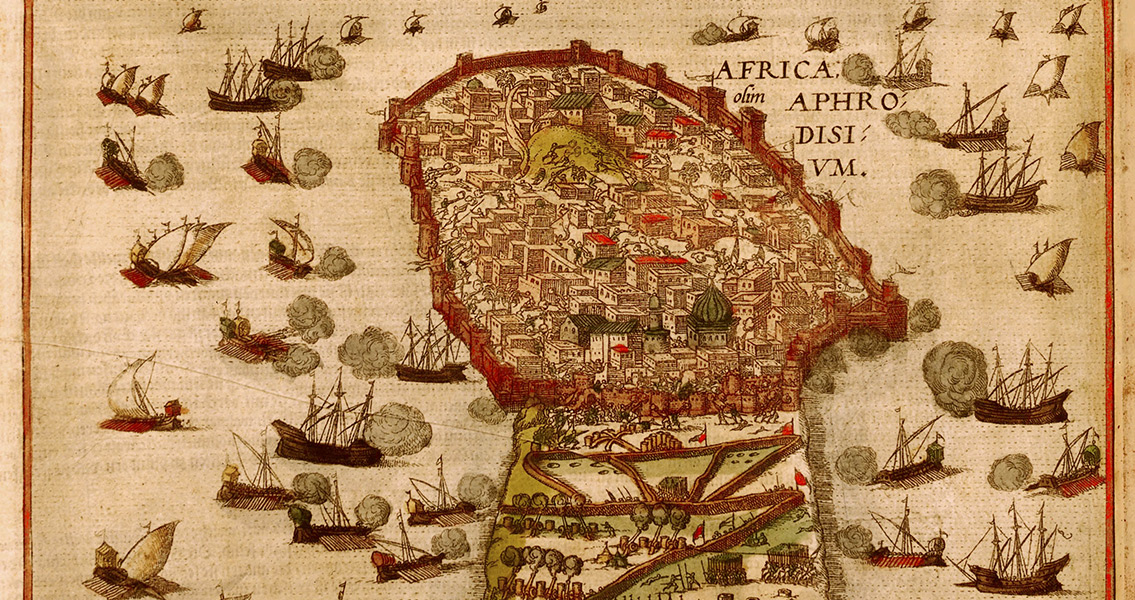<![CDATA[In 1087, a joint Pisan and Genoese force attacked the North African town of Mahdia, located in modern-day Tunisia. Christian forces returned to Italy triumphantly and used their spoils of war to construct commemorative churches. A number of Arabic and Latin sources from the time testify to the events surrounding the raid of Mahdia. One of the most important Latin sources is the poem Carmen in Victoriam Pisanorum, 'Song for the Triumph of the Pisans'. The Carmen, written by a Pisan cleric only months after the raid, commemorates the expedition. It has often been argued that the raid on Mahdia - conducted under the banner of St. Peter against a Muslim ruler - was a direct precursor to the First Crusade which followed eight years later. The Carmen is often viewed as providing context for the development of a crusading ideology in the eleventh century. A pioneering new study has taken a fresh look at the Carmen. Matt King, a PhD student in the Department of History at the University of Minnesota, has been studying the Carmen as a means of understanding Christian perceptions of Islam. "An examination of this text will allow historians to consider Latin Christian perspectives on Islam and its adherents during the period immediately preceding the First Crusade," King writes in his article, published in Hortulus, a graduate journal on medieval studies. It is usually suggested that Pisan interests in North Africa were primarily commercial, with military activities receiving less attention. King argues that there was a certain level of coexistence and cooperation between Pisa and Islamic states, while the Carmen reveals a different side of the story where religiously-charged rhetoric could be applied to justify violent ends. The Mahdia raid can be located in a wider context of Pisan military activities in North Africa. Pisa had been involved in military actions against Muslims throughout the eleventh century; briefly seizing the city of Bone in 1034 and helping the Norman Robert Guiscard in his conquest of Sicily in 1063. "The author of the Carmen was thus writing in the midst of conflicts between burgeoning Italian commercial powers and Muslim states in the Mediterranean," King notes. Importantly, the Carmen makes frequent Old Testament references in an effort to locate Pisan activity in a Biblical tradition. Within this framework, the inhabitants of Mahdia take the form of Old Testament villains who feel the wrath of God. In contrast, King argues, the Pisans are a Gideon/David/Moses combination who, through the favour of God, are able to defeat their adversary. "Such a description makes clear the deep religious roots that run throughout this story," King notes. "In this narrative, it is impossible to separate the sacking of Mahdia or the author's perception of Islam from this ancient narrative." The portrayal of Islam in the Carmen is a multi-faceted one. Pisan attacks are understood as an epic confrontation, similar to the Old Testament and classical tales. Further, the doctrine of the Muslim inhabitants of Mahdia is portrayed as a form of heretical Christianity. Taken together, these depictions of Muslim Africa reveal a medieval Latin understanding of the area as a place and people of the utmost evil. King notes that the Carmen is, however, a triumphant poem. The author is consciously contextualising the Pisan-Genoese raid in a tradition of God-willed triumph. Simply taking the Carmen's portrayal of Islam at face value, therefore, may misrepresent the Latin understanding of Islam. "If we cautiously take the Carmen as indicative of general trends in Pisan perceptions of Islam and Africa," King concludes, "we thus can see an image of Pisa as a city with some knowledge of medieval Ifriqiya and as one that used this knowledge to nurture some image of righteous war against Muslims." For more information: www.hortulus-journal.com Image courtesy of Wikimedia Commons user: DrFO.Jr.Tn ]]>
Medieval European Perceptions of Islam
